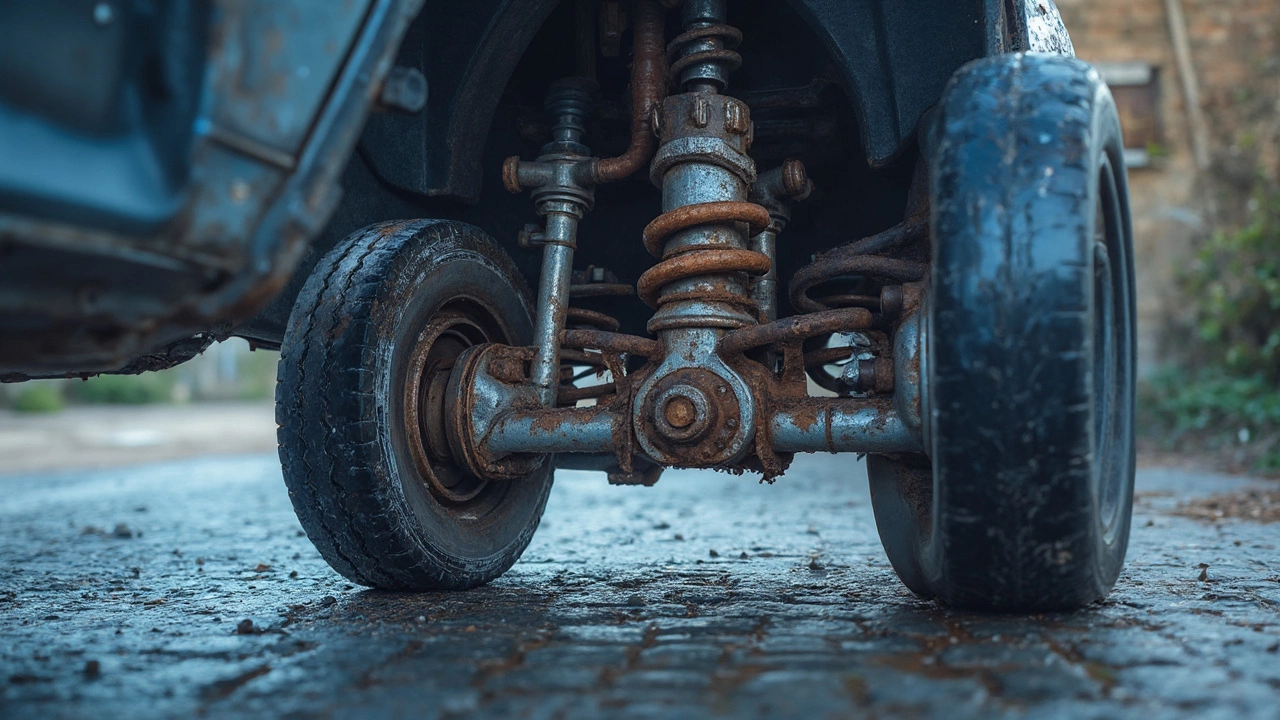Bad Suspension: What It Is, Why It Happens, and How to Fix It
When dealing with bad suspension, a condition where the vehicle’s suspension components are worn, loose, or damaged, causing poor handling, noise, and uneven tire wear. Also known as faulty suspension, it can compromise safety and comfort. The problem often includes shock absorber, the damper that controls rebound and compression in the suspension and wheel alignment, the adjustment that makes sure wheels point in the right direction relative to each other and the road. In simple terms, a bad suspension means the car can’t keep its wheels steady, which leads to a noisy ride, reduced grip, and faster tire wear.
How Bad Suspension Shows Up on the Road
First sign is a clunk or rattling when you go over bumps. That noise usually comes from worn bushings, broken springs, or a failing shock absorber. Next, you’ll feel the car dip or lurch during cornering – the suspension isn’t keeping the wheels level, so the vehicle leans too much. Uneven tire wear is another clue; if the front right tire is bald while the left is still good, the suspension geometry is likely off, often because the wheel alignment is out of spec. Finally, the steering can feel vague or “floaty,” a clear sign that the front suspension parts aren’t providing enough feedback.
These symptoms don’t happen in isolation. Worn shocks, which lose their ability to dampen movements, influence ride comfort and handling and they also affect how the tires contact the road, which in turn wheel alignment must compensate for, otherwise you get uneven wear. In other words, bad suspension encompasses both component wear and misadjustments, and fixing one part often requires checking the others.
To diagnose the issue, start with a visual inspection. Look for leaking fluid around the shock absorbers, cracked or sagging springs, and torn rubber bushings. Then, do a bounce test: press down hard on the front or rear of the car and watch how many times it rebounds. One or two bounces mean the shocks are still doing their job; continuous bouncing means they’re worn out. After the visual check, a professional alignment test will tell you if the wheels are set correctly. Most garages can run a quick computer‑aided alignment check and point out any angles that are out of tolerance.
When it comes to fixing a bad suspension, the approach depends on what’s worn. If the shock absorbers are leaking or the bounce test fails, replace them – it’s a relatively inexpensive job that restores both comfort and handling. If the springs are broken or sagging, they need to be swapped out; you’ll often replace both front or both rear springs at once to keep the ride balanced. Worn bushings are a bit trickier because they’re hidden behind other parts, but they can cause the clunking noise and misalignment if left ignored. Finally, after any part replacement, a proper wheel alignment is essential; even new components will wear out faster if the wheels aren’t set right.
Keeping a healthy suspension isn’t just about fixing problems when they appear. Regular maintenance can prevent many issues. Check your suspension fluid (if you have hydraulic shocks) every 12‑15 months, and look for any signs of oil on the wheels after a drive. Rotate your tires every 5‑7 k m to even out wear, which also helps spot alignment problems early. And when you hit a big pothole or curb, give the suspension a quick once‑over – a sudden impact can bend a control arm or break a bushing, leading to bad suspension down the line.
Bottom line: bad suspension is a chain reaction of worn parts and misadjusted geometry. By understanding how shock absorbers, springs, bushings, and wheel alignment interact, you can spot the warning signs early and choose the right fix. Below you’ll find a curated set of articles that dive deeper into each symptom, explain how to test for wear, and walk you through DIY repairs or when to call a professional. Whether you’re dealing with a noisy ride, uneven tire wear, or a loose steering feel, the posts ahead give you actionable steps to get your car back on solid ground.

How to Know if Your Suspension is Failing: Recognizing Key Signs Early
Feb 18 2025 / Suspension PartsThis article delves into the signs of a failing car suspension, helping vehicle owners recognize when repairs are needed. From identifying unusual noises to understanding the impact on tire wear, we cover practical tips to keep your ride smooth. Discover how suspension issues manifest and learn preventative measures to avoid costly repairs. Ideal for drivers who want to maintain vehicle performance and safety.
VIEW MORE